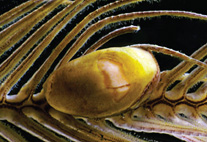Abstract
Brachionus sessilis Varga, 1951 is an epizoic rotifer living exclusively on cladocerans of the genus Diaphanosoma. Current taxonomic knowledge relies solely on limited morphological information, whereas there is no type material. Here, we aim to resolve issues concerning its morphology and taxonomy using both morphological and genetic characters on material sampled from Lake Balaton (Hungary), as well as Lake Doirani (Greece) that was selected for comparison purposes. Biometrical analysis was based on extensive lorica measurements. Phylogenetic reconstruction was based on DNA sequence information of the mitochondrial cytochrome c oxidase subunit I (COI) and 16S rRNA gene regions as well as of the nuclear internal transcribed spacer 1 (ITS1). Well-supported evidence for substantial differentiation of B. sessilis from its closest phylogenetic relatives supports its species-rank status. Our phylogenetic analysis suggests a highly supported clade encompassing B. sessilis and another epizoic rotifer, namely B. rubens.

